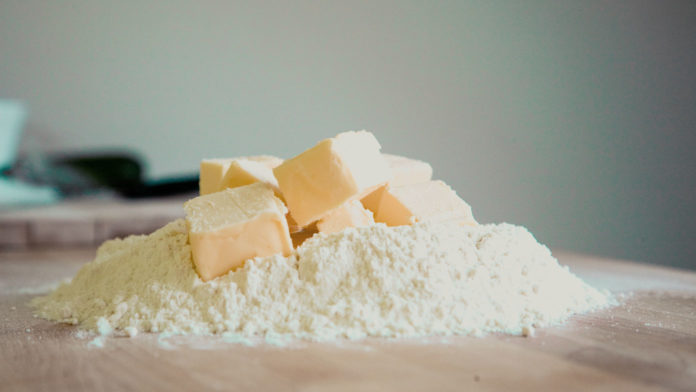Early in the COVID-19 pandemic, shoppers rushed to panic buy many household staples. Toilet paper and disinfectant wipes flew off the shelves, and it took months before people could consistently find flour and yeast as housebound citizens flocked to the baking craze.
A year later, the demand for baking ingredients is still high, and it might be having an unintended and noticeable effect on butter.
Softening butter produced in Canada isn’t as simple as leaving it out on the counter these days. Thousands of Canadians have taken to social media to swap stories about the hardness of their room temperature butter, and amidst this pressure something remarkable happened: the Dairy Farmers of Canada association advised farmers to stop a feed practice that might be behind the change.
Producing more butter to satisfy growing demand wasn’t as easy as flipping a switch. First, makers need more butterfat to churn into butter. According to food researcher Sylvain Charlebois, professor and director of the Agri-Food Analytics Lab at Dalhousie University, the most common and cost-effective practice to boost the amount of butterfat in milk is to add palmitic acid to cattle feed. It’s a perfectly legal practice that has been spreading over the past decade, but the thought has left many consumers with a bad taste in their mouths.
To understand why, we need to take a closer look at palmitic acid, and the palm oil used to make it. A growing number of consumers are trying to avoid products made from palm oil, both for health and environmental reasons. Its production is linked to massive deforestation, especially in places like Malaysia and Indonesia, destroying important wildlife habitats and adding to climate change.
Unfortunately for those seeking to avoid it, palm oil is widely used in food processing, in everything from instant noodles to cosmetics, because it is cheap, smooth, and stable. Further blocking transparency, the composition of cattle feed doesn’t need to be listed on the ingredients label for dairy products.
The notion of higher palm fat levels in cattle feed jibes with the increased firmness of resulting butter at room temperatures; palmitic acid is saturated, and that makes it easier for fat molecules to stack together neatly and form solids at room temperature. By contrast, polyunsaturated fats like olive oil tend to be liquids at room temperature.
Butter is a complex mixture of saturated and unsaturated fats, but the more the mixture tends towards saturated fats, the more solid it will be when left out on the counter. Furthermore, long chain saturated fatty acids like palmitic acid are associated with greater risk of cardiovascular disease.
All that being said, as a minimally processed food product, butter is highly sensitive to many possible changes in what dairy cows are eating. Seasonal changes in butter texture produced in summer and winter is a well-known phenomenon, where the content of saturated fats changes as cows switch from grazing on moist grasses in warm weather to drier feeds like hay in the winter. Similar hardening could also just be a result of a drier year changing the quality and composition of corn or flax.
To get definitive answers, we have the science to screen butterfat for palmitic acid. According to a study by David Christensen, a professor emeritus of animal and poultry science at the University of Saskatchewan, over a third of the palmitic acid consumed in feed is present in milk. This type of technology could be used to incentivize the use of feeds that don’t include palm fats.
On the other side of the coin, however, meeting demand without supplementing feed will mean raising more dairy cows, which comes with its own carbon footprint.
In Canada, the dairy sector is part of a government-sanctioned quota system that taxpayers subsidize, meaning only a select few producers are able to participate. As a result, Canadians pay more for dairy products than many places around the world to protect and compensate workers. There’s a social and moral contract for quality products, which helps explain how consumer pressure has had such a swift effect.
The Dairy Farmers of Canada are assembling a working group to discuss the issue, representing producers, processors, the Consumers Association of Canada, veterinary nutritionists, and animal scientists. New guidance and increased transparency will go a long way towards restoring confidence in this popular household staple.








































